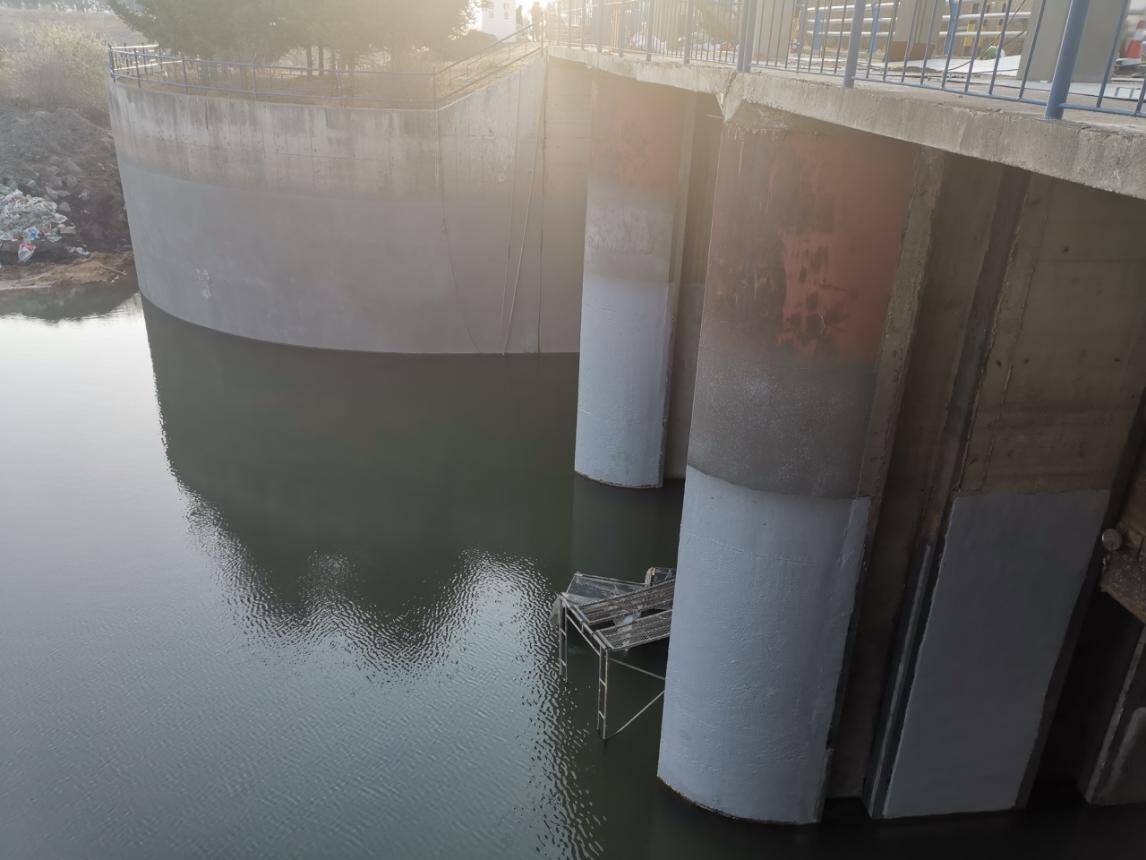Repairing Concrete Bridge Pier
Carbon Fiber Reinforced Polymer(CFRP) Material
The carbon fiber repair and reinforcement process is simple and rapid, and the construction cost is greatly reduced. Especially for the similar water channels of the tendering project, the construction period is very short and the advantages are very obvious.

Horse Construction Project - CFRP For Bridge
The Heilongjiang Nenjiang River Diversion Project is a large-scale water conservancy project for the Daqing Petroleum Industry, with a total length of 243.5km and a total of 36 slab bridges along the canal. At present, 90% of the structural members of the bridge piers cannot meet the requirements and require repair and reinforcement. Carbon fiber reinforced materials have the advantages of high tensile strength, low density, corrosion resistance and good durability. The technology application of carbon fiber sheet reinforcement and reinforcement of concrete piers is broad.
Advantages of Horse Carbon Fiber Wrap Strengthening
• Easy installation
• Corrosion resistance
• Short construction period
• No maintenance required
• Light weight, no influence to original structure
• Low cost, cost effective compared with other methods
Bridge Pier Repair Process with Carbon Fiber Reinforced Polymer(CFRP) Material
The reinforcement construction process is: concrete base treatment, primer coating, defect repair with epoxy putty, carbon fiber sheet, curing, painting, completion acceptance.
1 Concrete substrate treatment
The concrete substrate treatment procedure is as follows:
(1) Remove the incomplete and damaged part of the surface of the concrete member to reach the dense part of the structure and make the surface smooth.
(2) Check whether the exposed steel bars are corroded. If there is rust, necessary treatment is required.
(3) Use epoxy mortar to repair and restore the missing parts of the components that have been chipped, removed and exposed to achieve a smooth surface.
(4) Polish the protruding parts of the surface of the component (concrete components, the level difference of the formwork, etc.), and the level difference after repair should be as smooth as possible; the corners and corners should be rounded with a grinder, and the radius of the corner must be ≥30mm .
(5) After the surface of the structure or component is polished, use a blower to clean up the surface dust and debris, or clean it with water and alcohol, and make the surface fully dry.
2 Apply primer
(1) Weigh the epoxy resin and curing agent of the primer according to the specified ratio and put it into the container, and stir it evenly with a stirrer; the one-time blending amount should be used up within the available time.
(2) Use a roller brush to evenly apply the primer on the surface of the concrete. After the fingers are dry (generally curing for 3 to 24 hours), the next process can be carried out.
(3) After the primer is dry or cured, the raised parts on the surface (usually like dew drops) should be smoothed with emery cloth or angle grinder.
3 Use epoxy putty to repair defects
(1) Use epoxy putty to fill the recessed parts of the component surface and repair it to a smooth and smooth surface.
(2) The inner corners (differences, arches, etc.) should be filled with epoxy putty to make them smooth. After the putty is applied and scraped, the unevenness and roughness that still exist on the surface should be smoothed with sandpaper.
4 Paste the carbon fiber sheet
(1) The splices of the sheets along the length of the fiber must overlap by more than 10cm. This part should be coated with more resin, defoaming, and the resin operation should proceed as normal. No overlap in the width direction of the sheet.
(2) Before patching, apply the epoxy resin for pasting evenly with a roller brush, which is called undercoat. When patching, try not to have air between the fiber sheet and the resin. Rollers (special tools) can be used to roll on the carbon fiber sheet along the fiber direction several times to make the resin penetrate into the fiber.
(3) 30min after the fiber sheet is constructed, use a roller brush to evenly apply the epoxy resin for pasting, which is called top coating. If you need multiple layers of paste, repeat the above steps, when the carbon fiber sheet pasted on the bottom layer is dry to the touch, you can paste the next layer.
(4) The top coating of the last layer of carbon fiber should be evenly painted and the periphery should be neat.
5 maintenance
(1) After the construction of the carbon fiber sheet, it should be cured to ensure that the temperature during the curing period is not lower than the allowable use temperature of the epoxy resin.
(2) The curing period is generally 84 days.
(3) The places subject to wind, rain or human disturbance should be covered and closed for maintenance.
6 Surface coating For structures or components that require appearance decoration, you can apply epoxy-based coatings or sandblasting and plastering with conventional coatings on the surface of the pasted carbon fiber.
Conclusion of Bridge Repairing with Carbon Fiber Reinforced Polymer(CFRP) Material
The carbon fiber sheet has light weight, high strength and good conformability, and can adapt to the repair and reinforcement of various complex structures, and has little effect on the weight of the structure. The carbon fiber repair and reinforcement process is simple and quick to construct. Although the price of carbon fiber itself is higher than other materials, the construction cost is greatly reduced. Especially for the similar water channels of the tendering project, the construction period is very short and the advantages are very obvious.